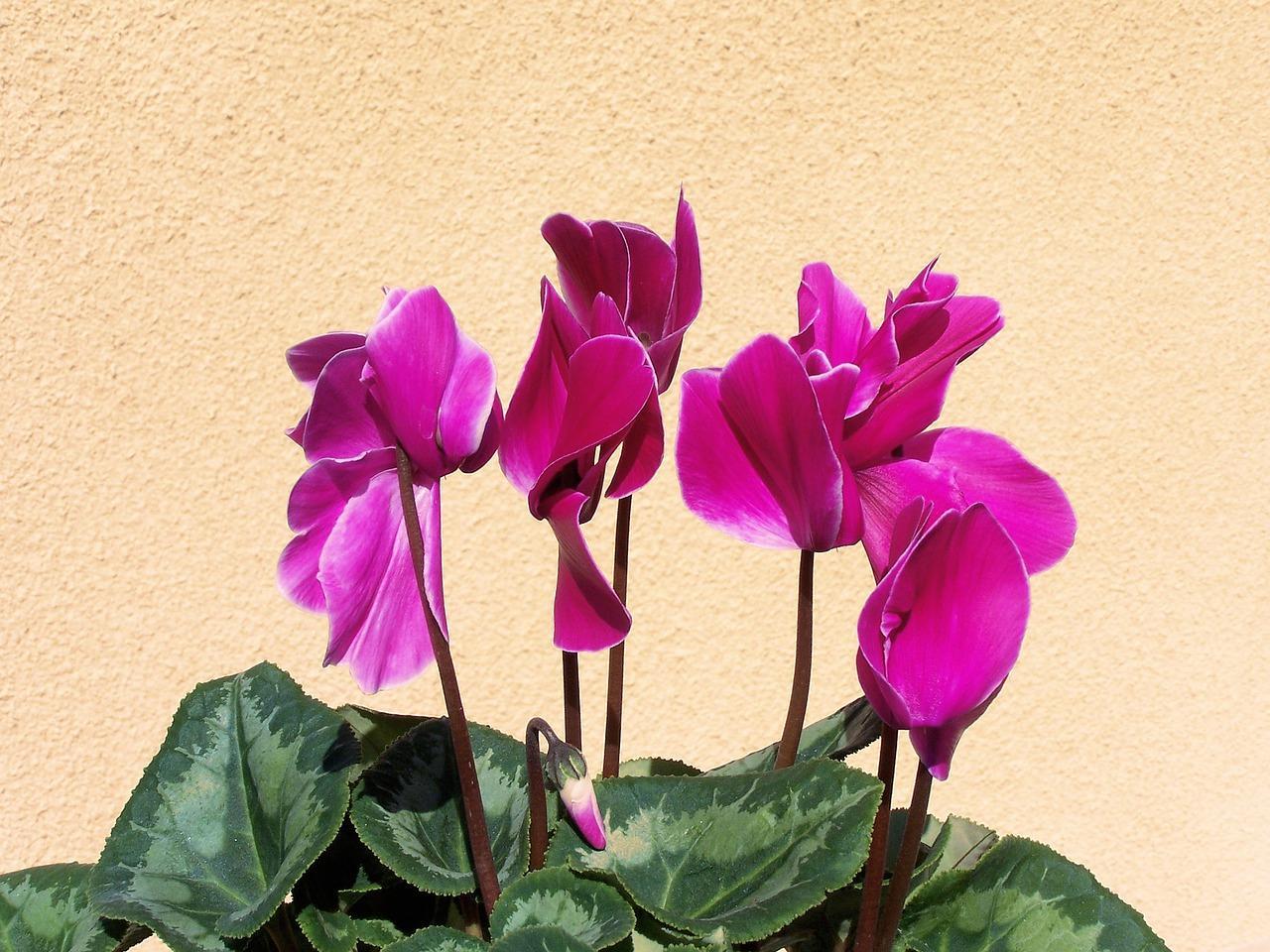Indoor Plants That Grow in Water


For those who want to have a house full of plants but travel a lot or have problems with watering, growing plants in water can be a good -and chic- solution. The technique, which allows plants to be grown without soil, is called hydroponics. Also, by not using soil, we get rid of mosquitoes and other insects that breed in the soil, and we avoid mold issues.
In thedailyECO article below, you'll find a list of 12 houseplants that you can easily grow in water, as well as some tips on how to make sure your plants thrive using this technique.
- Sweet potato
- Lucky bamboo
- Devil's ivy
- Mint
- Cyclamen persicum
- Peace lily
- Swiss cheese
- Spiderwort (Tradescantia)
- Common ivy
- Syngonium
- Swedish Ivy
- Chinese evergreen
- Tips for caring for indoor plants that grow in water
Sweet potato
Sweet potato vine (Ipomoea batatas), named for its edible cousin, is an ornamental annual grown for its attractive foliage. The foliage adds a tropical flair to any corner of your home, and best of all, it comes in a range of colors and different shapes.
You can also grow sweet potato plants directly in water. Sweet potato plants will continue to grow in water for months or even years, whether they come from cuttings or a tuber. Ensure that the water level stays constant and that the container is emptied and refilled with clean water every few weeks in order to prevent bacteria growth.
You can also transplant the plant at any time if you make sure it gets direct sunlight every day.

Lucky bamboo
Dracaena braunii, also known as lucky bamboo, can grow in water without any problems. You just need to make sure that the stems are completly submerged and fertilize the water at least every two months.
It is advisable to really change the water every 7 days. In its natural habitat, lucky bamboo grows in the shade of trees. So place your plant in a bright place without direct sunlight.

Devil's ivy
Another houseplant that grows in water is devil's ivy (Epipremnum aureum). To grow this plant in water, you need to make sure that the end of the stem is well covered with water, so that after a few weeks it takes its first roots. In order for it to grow compactly, we recommend that you cut off the ends so that two new roots can sprout from the same stem. You do not need expensive pumps, containers, or special fertilizers, and this plant grows easily from cuttings.
This tropical plant is very hardy and can take quite a bit of neglect. However, the water loses oxygen over time, so it is recommended to pour out the old water and add fresh water every few weeks.

Mint
If you want to have the most commonly used aromatic plants in the kitchen always at hand, do not hesitate and start growing mint (Mentha piperita) in water. This plant does not require much care, you just need to submerge its branches until they take root and put it in a place where it will receive sunlight. They are perfect for decorating the kitchen and give it a fresh and pleasant aroma.
The main advantage of this method is that no soil is needed. No mess, no watering and no fungus gnats. However, mint does not live forever in water. Eventually the leaves will turn yellow, and the plant will stop growing. Change the water and wash the jar every five to seven days to make it last longer.

Cyclamen persicum
Cyclamen persicum is a small and compact flowering potted plant that, with proper care, may just last this season or possibly the next. While it is true that cyclamen is a plant that is very susceptible to botrytis due to excessive moisture in the roots, it does not have many problems when grown in water.
This plant with its showy flowers and winter bloom is perfect as a houseplant grown in water to decorate your living room or hallway. When the Cyclamen persicum blooms, make sure to provide it with enough light, but not direct sunlight.

Peace lily
Spathiphyllum, or peace lily, is a very easy plant to grow in hydroponics. In fact, it is often sold in vases without soil. Ideally, the base of the plant should float above the water line, either through a specially made vase insert or through a layer of small river stones. In addition, the striking deep green leaves and elegant white flowers decorate your home without the need for daily care.

Swiss cheese
Swiss cheese (Monstera deliciosa) is a plant that does not need much light, and it is perfect for growing indoors, both in soil and in water. You can grow a Monstera deliciosa in water for quite a long time, but it will never reach its potential size or health unless it eventually moves to soil. A Monstera left in water will survive, but it will not thrive in that environment.
Be careful, it is not advisable to place it in the shade either. Just make sure it gets indirect light every day.

Spiderwort (Tradescantia)
Commonly known as Spiderwort (Tradescantia), this plant is one of the easiest species to grow. Tradescantias have an unsurpassed will to live: They are fast-growing and can survive in a variety of environments. The exceptional abilities of Tradescantia mean that they are ideal for growing in water.
To do this, you just need to take a cutting about 10 cm long and dip its end in a container of water so that it begins to take root.

Common ivy
Common ivy (Hedera helix) can also be cultivated in water. For this type of cultivation, ivy varieties with slightly smaller leaves are preferred. For cultivation, we recommend that you use cuttings about 20 cm long and make sure that you immerse the stems half in water.
Hedera helix is a pleasingly hardy and fast-growing plant. If you have prepared your cuttings properly and place the container in a favorable location, the roots will form within three weeks.

Syngonium
Just like lucky bamboo, it is easy to grow arrowweed (Syngonium) in water. You can keep them in decorative vases and jars forever.
To grow arrowhead plant in water, you need to take stem cuttings from a healthy plant. This houseplant must receive indirect light so that its leaves do not lose their color. Within 7-14 days you will see that new roots are formed from the cuttings.
Change the water every 4-7 days to keep the plant fresh and thriving. Your water should be free of salt and chlorine.

Swedish Ivy
Plectranthus verticillatus also known as Swedish Ivy or money plant is a perennial semi-succulent ground cover native to woodlands and forest edges in southeastern Africa. It has long been a garden favorite in many parts of the world, both for its attractive foliage and for its delicate white to pale purple flowers.
It can grow easily in water, just make sure it does not receive too much direct sunlight, since the leaves can burn. To avoid this problem and maintain a healthy money plant, place it near a window where it will receive plenty of indirect light.
The color of the leaves is a good indication of health. Green and shiny leaves mean that the plant is doing well.

Chinese evergreen
Aglaonema, commonly known as Chinese periwinkle, is a plant native to the tropical forests of South Asia and is often used for interior decoration due to its strikingly colorful leaves. Aglaonema plant also offers the possibility of growing them directly in water. You do not have to spend a lot of time on them. Just make sure that it receives a little light every day, but do not overdo it with light, because in nature it grows in dense forests in the shade.
If you want the plant to thrive, add some charcoal to the water and feed it once a month with a drop of houseplant fertilizer.

Tips for caring for indoor plants that grow in water
Here are some essential tips on how to better care for your houseplants that grow in water:
- Make sure it stays at the same level by refilling it from time to time. If you prefer to replace the water completely, you can do that too.
- Plants growing in the water will also need to be pruned. Do pruning from time to time to stimulate growth.
- You can use liquid fertilizer or water-soluble fertilizer to enrich your plants. However, always make sure you use the right amount so as not to harm the plant.
- Always use a container that is appropriate for the size of the plant. Similarly, we do not recommend using clay containers, as clay is a porous material that can absorb water.
- For even better results, use glass vase with a thin neck to hold the plant upright.
- Find a slightly warm place where the temperature does not fluctuate too often. So avoid places near air conditioners or heaters.
You may also be interested in this other article, where we have listed the best aromatic houseplants.
If you want to read similar articles to Indoor Plants That Grow in Water, we recommend you visit our Indoor plants category.

















